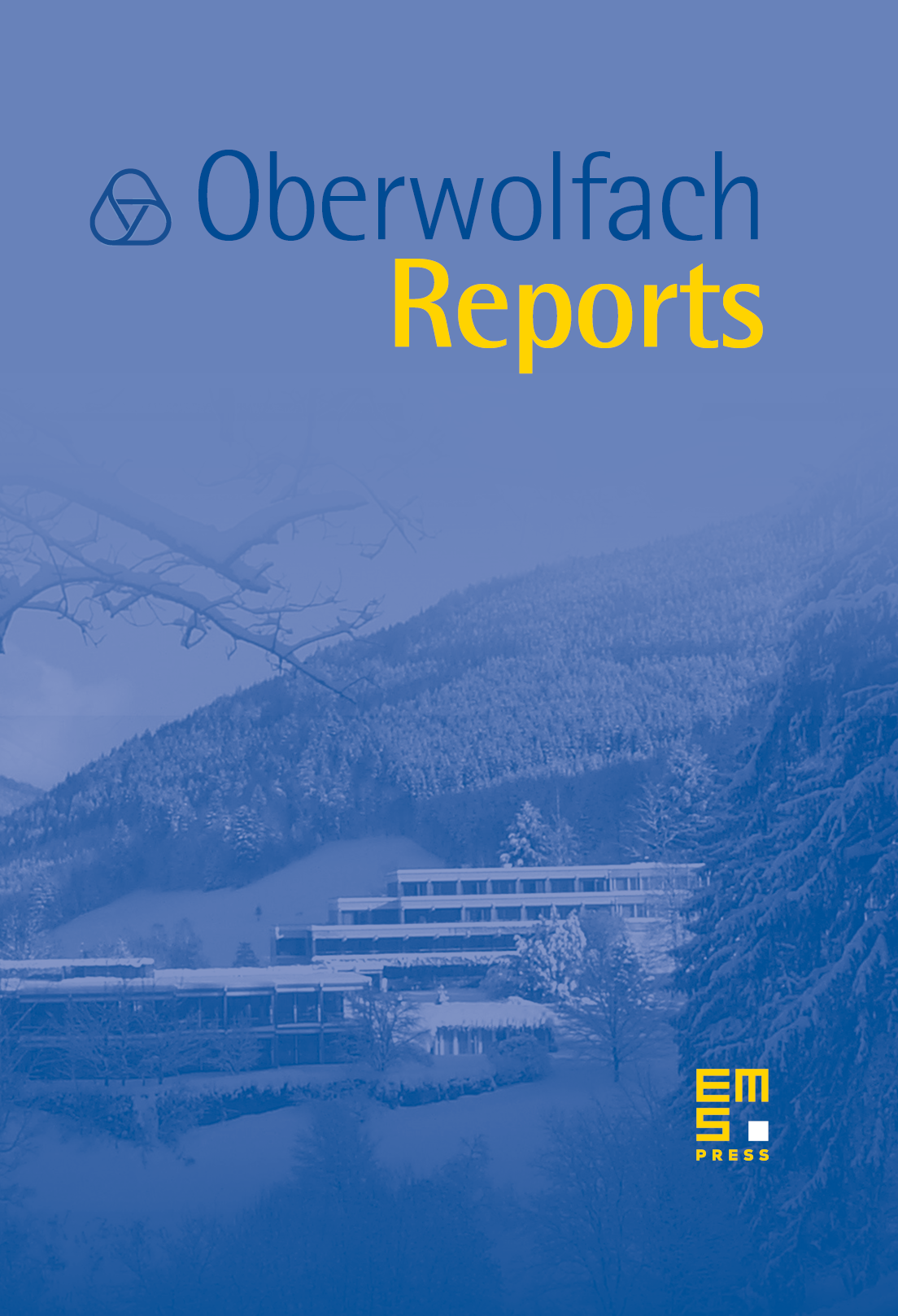Komplexe Analysis
Jean-Pierre Demailly
Université Grenoble I, Saint-Martin-d'Hères, FranceKlaus Hulek
Leibniz Universität Hannover, GermanyThomas Peternell
Universität Bayreuth, Germany

Abstract
The workshop Komplexe Analysis, organised by Jean-Pierre Demailly (Grenoble), Klaus Hulek (Hannover) and Thomas Peternell (Bayreuth) was held August 27th–September 2nd, 2006. This meeting was well attended with over 50 participants from Europe, US, Israel and Far East. The participants included several leaders of the field as well as many young (non-tenured) researchers, including four doctoral students.
The aim of the meeting was to present recent important results in several complex variables and complex geometry with a particular emphasis on topics linking different areas of the field, as well as to discuss new directions and open problems. Altogether there were eighteen talks of minutes each, a programme which left sufficient time for informal discussions and joint work on research projects.
One of the topics under discussion was the classification theory of higher dimensional varieties. The key note lecture was given by J. McKernan who announced a proof of the main conjecture in Mori theory, which says that all smooth projective varieties of general type have a minimal and a canonical model. This is equivalent to finite generation of the canonical ring. Outside the official programme McKernan also explained some of the technical details of the proof. In his talk S. Kovács gave a proof of a conjecture of Viehweg on families of canonically polarized varieties over a surface. On the other side of the classification problem, the geometry of Fano manifolds and their classification also played an important role. P. Jahnke lectured on recent progress in the classification of Fano manifolds and A. V. Pukhlikov spoke on the birational geometry of these varieties. Finally, J.-M. Hwang discussed the problem which Fano manifolds can be rigid targets of holomorphic maps and M. Brion presented his work on the structure of log homogeneous pairs.
Mirror symmetry and related topics remain an important aspect of the field. This was addressed in three talks. B. Siebert spoke on tropical games and mirror symmetry. Tropical geometry was also the topic of A. Gathmann's talk who discussed recent progress in enumerative geometry in connection with tropical methods. On the other end of the temperature scale D. van Straten explained arctic monodromy calculations.
Hyperbolicity was the central theme of the talks of E. Rousseau, who proved hyperbolicity type results for generic hypersurfaces of sufficiently high degree in -dimensional projective space, and in the programmatic lecture by M. McQuillan. The talks by Ph. Eyssidieux on singular Kähler–Einstein metrics and by T. Ohsawa on Levi flat hypersurfaces in complex manifolds were predominantly analytic in nature.
More classically geometric topics were discussed by F. Catanese (slope of Kodaira fibrations), F. Bogomolov (symmetric tensors and the geometry of secant varieties) and P. M. H. Wilson (geometry of Kähler moduli). Finally, A. Sommese discussed techniques on how to decompose certain varieties into irreducible components. These questions were motivated by engineering problems and their solution has many practical applications.
Cite this article
Jean-Pierre Demailly, Klaus Hulek, Thomas Peternell, Komplexe Analysis. Oberwolfach Rep. 3 (2006), no. 3, pp. 2399–2446
DOI 10.4171/OWR/2006/40